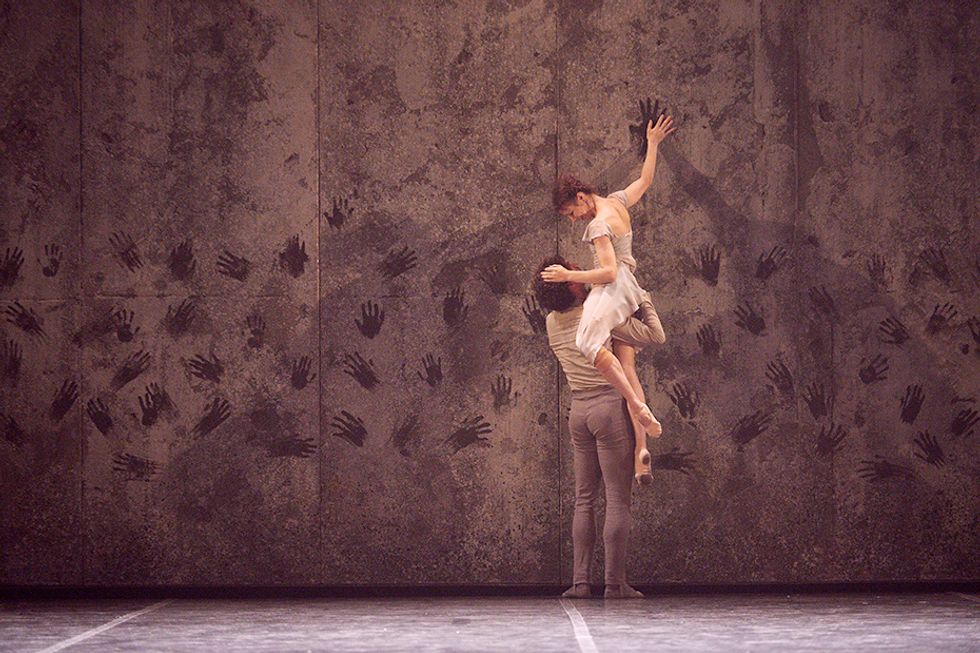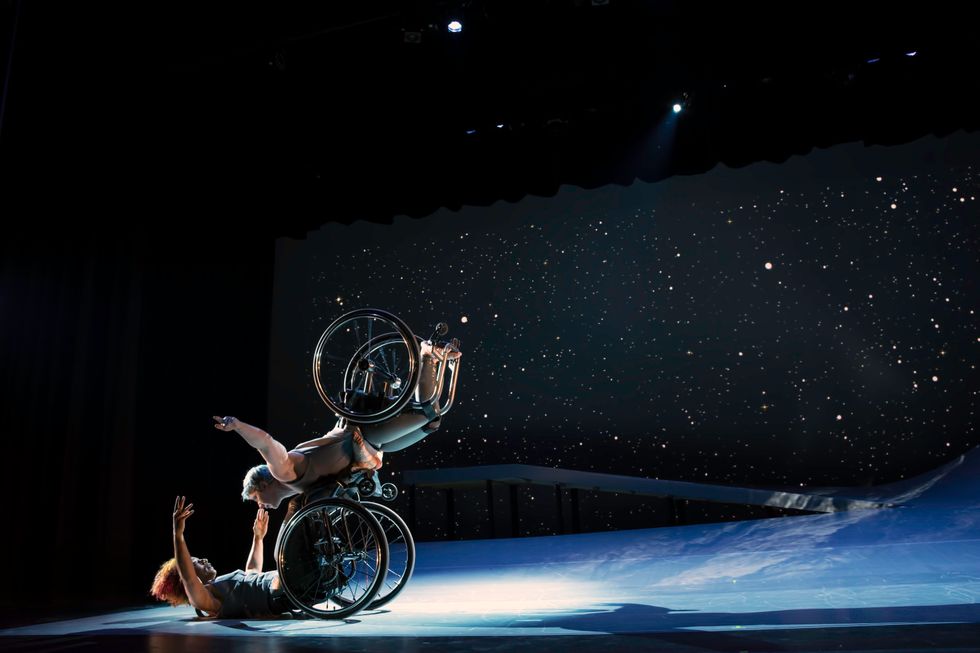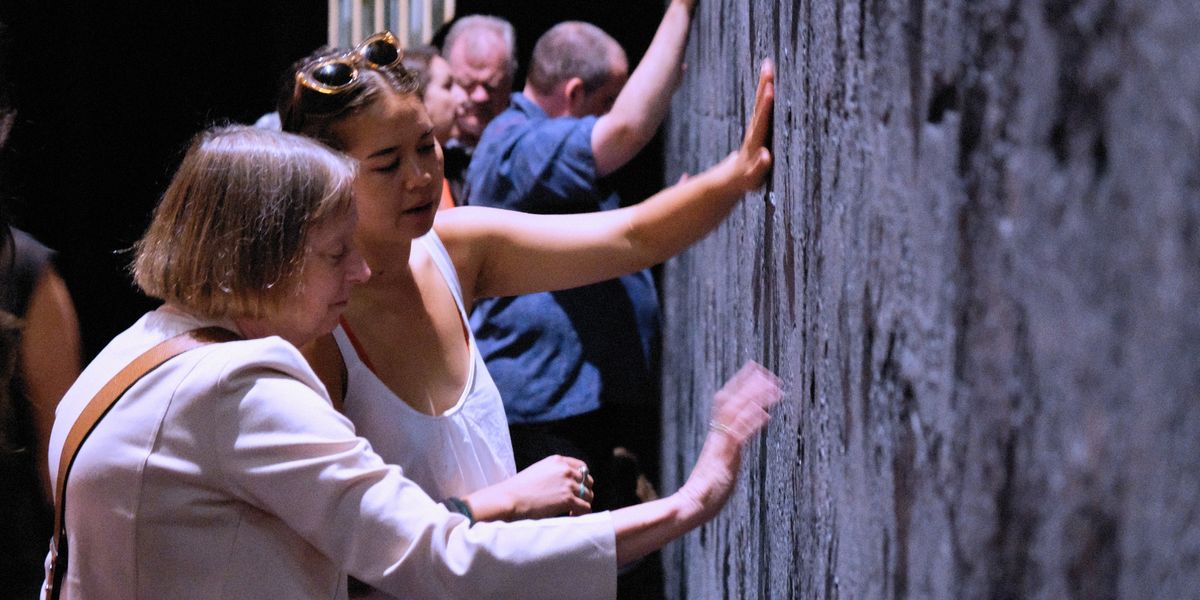How Can Blind and Partially Sighted Audiences Get a Complete Dance Experience?
While you might think of dance as a primarily visual art form, performances engage us on multiple levels. Our ears take in the score, the artists’ breathing patterns, fellow audience members’ reactions, and the physical percussion made by the dancers’ footfalls and partnering. All of this information is available to audience members with limited to no vision, and when it comes to providing them with the rest, there are multiple approaches being refined by experts in the field generally referred to as “audience accessibility.”
Haptic Feedback

Alina Cojocaru and Isaac Hernandez in English National Ballet’s Giselle by Akram Khan.
Laurent Liotardo, Courtesy ENB
On September 19 at Sadler’s Wells, English National Ballet presents its Giselle by Akram Khan with audio description as well as a preshow touch tour—a chance for audience members to feel the set, bamboo-cane props and costumes before the show, with explanations given by company dancers and other docents. Developed with Khan’s input, the touch tour and the script for audio description were created by Arts Access Aotearoa for ENB’s 2018 New Zealand debut. “We provided high-quality footage of the production for the audio describer to work from as they prepared the script,” says Charlotte Newman, ENB’s participation and events officer. “Once we were in Auckland, we invited two individuals to the dress rehearsal, so they could provide feedback from the perspective of someone who is registered blind.”
Newman says Arts Access Aotearoa has “set the standard” for audio description. With ENB’s recent move to a new facility, it aims to develop further integrated programming that will complement or expand upon existing programs for people with dementia and Parkinson’s, students in special education, and ENBYouthCo’s collaborations with Corali Dance Company, another London-based organization whose inclusive ensemble works with artists with learning disabilities.
Software Solutions

Alice Sheppard and Laurel Lawson in Descent
Jay Newman, Courtesy BRITT
While dancer and collaborator Laurel Lawson is proud to say Kinetic Light is “the first major North American company comprised solely of disabled artists, prioritizing disability aesthetics,” even it can’t anticipate every audience member’s unique needs. At a work-in-progress showing of the group’s Descent in December 2016, feedback from attendees with limited vision—who were provided with live audio description—let her know something was still missing.
“Descent shows us strapping and unstrapping from our wheelchairs, which in the disability community tends to be very private.” Sighted patrons reacted audibly. “Our blind and visually impaired friends came up to us afterward, wanting to know what all the fuss was about,” Lawson recalls. “One said something to the effect of, ‘I could feel everybody else leaning forward and holding their breath, oohing and aahing, but I had no clue what was going on based on the audio description.’ ”
That experience prompted Lawson, also co-founder of CyCore Systems, to begin developing the mobile app Audimance. While basic description services offer just one thread of narration, Audimance allows users to choose from or mix multiple parallel audio tracks, which can be anything from soundscapes to poetry to dry reportage. (The streaming of content to the app is controlled using stage-management software, so users hear events described as they happen, keeping their experience in sync with their neighbors’.) It allows for agency that Lawson likens to deciding which dancers to watch and when to “zoom out” and take in the whole stage at once.




